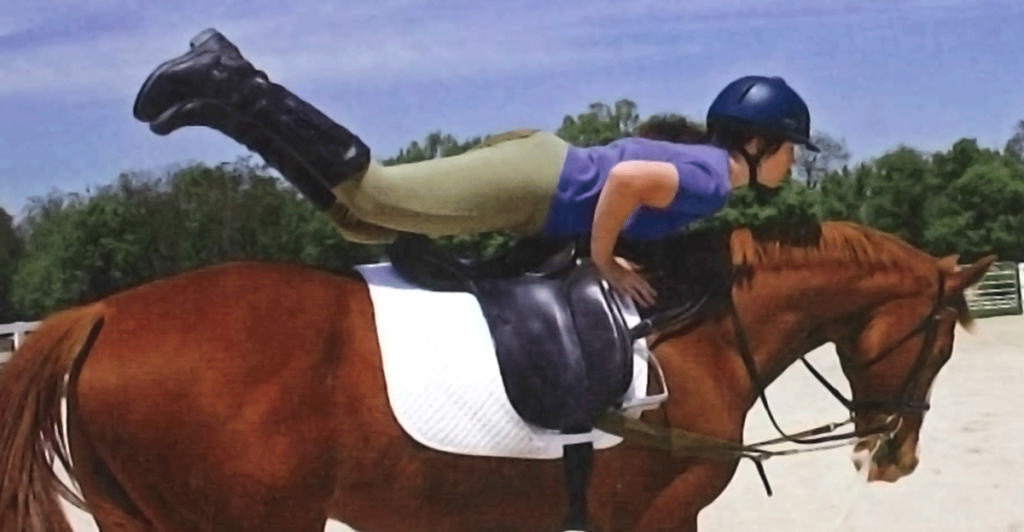It was over 25 years ago, but I can still close my eyes and immediately feel the pounding of hooves on the hard dirt road in my head, and the rawness of my skinned and abraded hands as they desperately pulled to one side, then the other, on what were, at the time, fairly useless reins. I can hear breathing—heavy, labored, both the horse’s and my own. And I can remember how the ground looked from where I crouched on the back of the runaway: it throbbed and swayed in corner of my eye, momentarily closer, then seemingly distant, a blurry heartbeat, pulsing in time with the horse’s manic strides.
The decision to abandon ship arrived in a moment of clarity. We were racing toward home, and the dirt road turned to pavement not so far ahead. I was 10 and overpowered. I feared the mare’s shoes slipping at this speed—there was a sharp turn at the bottom of the hill. I was afraid of her falling, crushing me, or losing my weakening grip there, tumbling to the concrete in the path of oncoming cars.
I’d been taught the emergency dismount when I started riding as a five-year-old. My pony then had been much closer to the ground, but the muscle memory kicked in nonetheless, and I had my feet out of the stirrups, my hands on the pommel, and my slight body pushed up, over, and clear of my horse’s flailing legs before I could overthink the maneuver. I landed at a run that turned into a tumble in the (relatively) soft shoulder at the side of the road, and seconds later I was back on my feet, shaky but thankfully unbroken, and headed after the mare, hoping she, too, had survived her panicked flight.
While being able to stop a runaway or out-of-control horse from the saddle—using the pulley rein, for example—is certainly preferable in many cases, knowing how to use the emergency dismount is an important skill, too. Simply practicing it on a horse that is standing motionless can improve your courage and athleticism. And having it in your riding toolbox provides a viable option for handling a crisis by promoting safe and controlled landings, and helping avoid rider injury.
Here are four steps to performing a safe emergency dismount. Try it at the halt before attempting it in motion. Perform it first on the left side, then on the right, as described here, to ensure symmetry—and to make sure you’re prepared should that be the safer side to dismount during a potentially hazardous situation.
1 Take both feet out of the stirrups. Inhale to prepare, stretching up, straightening both legs, and swinging them slightly forward to generate momentum for the next step, which should occur in one smooth, synchronized motion.
2 Exhale and fold down from the hips, bringing your belly to the horse and taking weight onto your hands, on the withers or pommel. Look forward through the horse’s ears as you simultaneously swing both legs up behind you over the hindquarters, touching your heels together. Practice swinging your legs a few times, returning to the basic seat in between.
3 To dismount, as you’re exhaling and when your legs are at their highest, slightly rotate your hips toward the right, pushing off and away to the right side of the horse, keeping your legs together.
4 As you land near the horse’s shoulder, keep your feet parallel with knees and ankles bent to absorb the impact. Look forward the entire time. Inhale as you straighten into an upright position, and then exhale. You did it!
Note: When vaulting off a moving horse, always face the direction of travel to maintain balance, and “hit the ground running” by taking a couple of walk or jog steps forward upon landing. If you lose balance, “tuck and roll” away from the horse: Tuck your head into your chest, wrap your arms around bent knees, and do a somersault.
Riding instructor Linda Benedik teaches the emergency dismount as part of a series of lessons for the rider on the longe line. For more lessons to building a confident rider with a balanced and effective seat, check out LONGEING THE RIDER FOR THE PERFECT SEAT, available from the TSB online bookstore, where shipping in the US is FREE.
CLICK HERE to buy this book on sale now!
Trafalgar Square Books, the leading publisher of equestrian books and DVDs, is a small business based on a farm in rural Vermont.


3 responses to “4 Steps to the Emergency Dismount”
I just took a bad fall and I realized, as I was riding buck number 20 or so at a dead gallop, that I really wished I had already bailed. Sadly, this is the one thing I *wasn’t* taught as a youngster. Now that I’m older and don’t bounce, I struggle to let go when s*** hits the fan. This entry is well timed because of my recent fall, but is also an important reminder that I really do need to take the time to practice this maneuver once I’m healed. I took gymnastics in my youth and that muscle memory saved me from worse injury, but I really need to practice letting go before I have no choice. This was beautifully written, too. I have been on a runaway on a dirt road, and this brought back flash backs. Thankfully, I was able to pull that particular horse up, but I remember planning to bail if we got to a certain point…
I am so sorry you recently had a bad fall. The learning about the “not bouncing” as we get older is one of the hardest lessons of all, especially when you’ve ridden all your life! Glad you found this post helpful and hope you are healed and back in the saddle soon.
I use to teach ….and have students practice . I do not do this anymore. I had a student E.D. when a horse was racing back to the barn. She should have rode it out. But she did not. She was air lifted to the hospital.